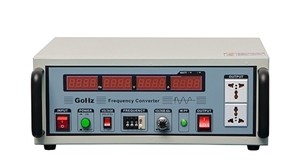Technical Analysis of the Hertz (Hz): The Unit of Frequency and its Engineering Significance

1. Fundamental Definition and Historical Context
The Hertz (symbol: Hz) is the derived unit of frequency in the International System of Units (SI). It is defined as one cycle per second (s⁻¹) for any periodic phenomenon. The unit honors German physicist Heinrich Rudolf Hertz (1857-1894), who, in a series of seminal experiments concluded in 1888, provided the first empirical validation of James Clerk Maxwell's theories by generating and detecting electromagnetic waves.
2. Dimensional Scaling and Electromagnetic Spectrum Allocation
The Hertz is scaled decimally to describe frequencies across the electromagnetic spectrum:
Kilohertz (kHz) = 10³ Hz
Megahertz (MHz) = 10⁶ Hz
Gigahertz (GHz) = 10⁹ Hz
The International Telecommunication Union (ITU) designates radio frequency bands as follows:
| Band Designation | Frequency Range |
| :--- | :--- |
| Very Low Frequency (VLF) | 3 - 30 kHz |
| Low Frequency (LF) | 30 - 300 kHz |
| Medium Frequency (MF) | 300 - 3000 kHz |
| High Frequency (HF) | 3 - 30 MHz |
| Very High Frequency (VHF) | 30 - 300 MHz |
| Ultra High Frequency (UHF) | 300 - 3000 MHz |
| Super High Frequency (SHF) | 3 - 30 GHz |
| Extremely High Frequency (EHF) | 30 - 300 GHz |
3. Critical Applications in Engineering Systems
Power Electronics & Grid Systems: Mains electricity frequency is standardized at either 50 Hz or 60 Hz, a critical parameter for the design and operation of transformers and AC motors.
Acoustics & Audio Engineering: The human auditory range is typically 20 Hz to 20 kHz. Frequencies below and above this range are classified as infrasound and ultrasound, respectively.
Signal Processing & Communications: Signal bandwidth is measured in Hz and its multiples. For example, a 1 kHz EM wave has a wavelength of approximately 300 km. Standard AM broadcast bands occupy 535 kHz to 1605 kHz.
4. Frequency Conversion Technology: Precision Power Conditioning
A Frequency Converter (or Hz Converter) is a sophisticated power electronic device designed to convert mains power (e.g., 50 Hz, 60 Hz) to a precisely controlled output with independent variable voltage and frequency. Unlike Variable Frequency Drives (VFDs), which typically output a pulse-width modulated (PWM) waveform optimized for motor control, a true Hz Converter generates a pure sine wave output. This allows for independent adjustment of output parameters (e.g., 50 Hz/400V, 60 Hz/480V, 400 Hz/115V) to match the specific requirements of sensitive or specialized equipment, including avionics (400 Hz), military systems, and laboratory apparatus.
5. Technical Note: Operating a 50 Hz Motor on a 60 Hz Power Supply
The synchronous speed (N_s) of an AC induction motor is governed by:
N_s = (120 × f) / P
where `f` is frequency (Hz) and `P` is the number of motor poles.
For a 4-pole motor:
At 50 Hz: N_s = (120 × 50) / 4 = 1500 RPM
At 60 Hz: N_s = (120 × 60) / 4 = 1800 RPM
This 20% increase in speed directly impacts power output. Since motors are constant torque devices, the horsepower (HP) is given by:
HP = (Torque × RPM) / 5252
A 20% rise in RPM yields a 20% increase in potential HP output. Crucially, rated torque can only be maintained if the Volts-per-Hertz (V/Hz) ratio remains constant. For instance, a motor designed for 380V at 50 Hz (a 7.6 V/Hz ratio) would require 456V at 60 Hz to maintain the same magnetic flux density and torque-producing capability. Operating at a non-native frequency without proper voltage compensation can lead to saturation, increased current draw, and thermal damage.

Leave a comment